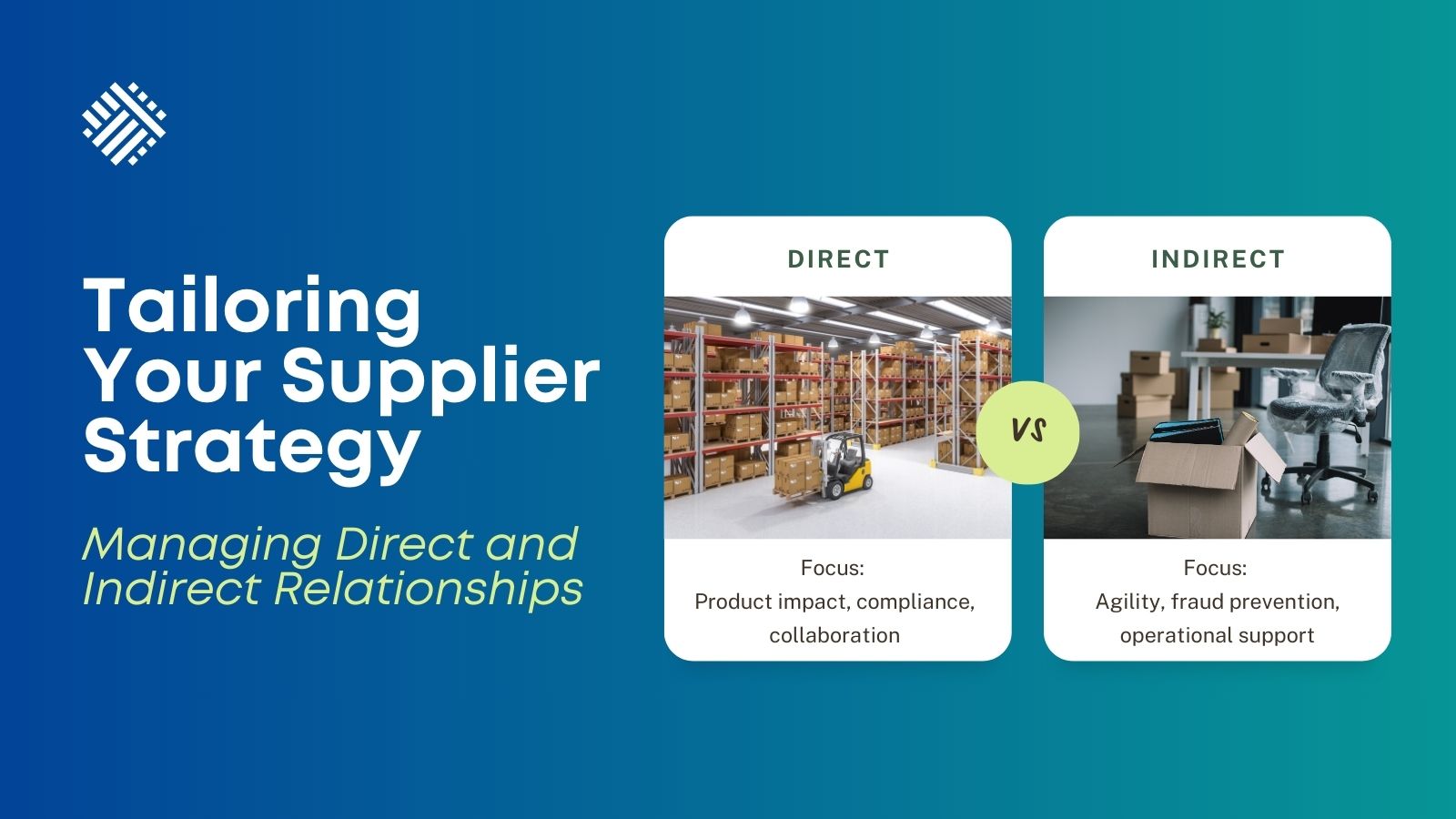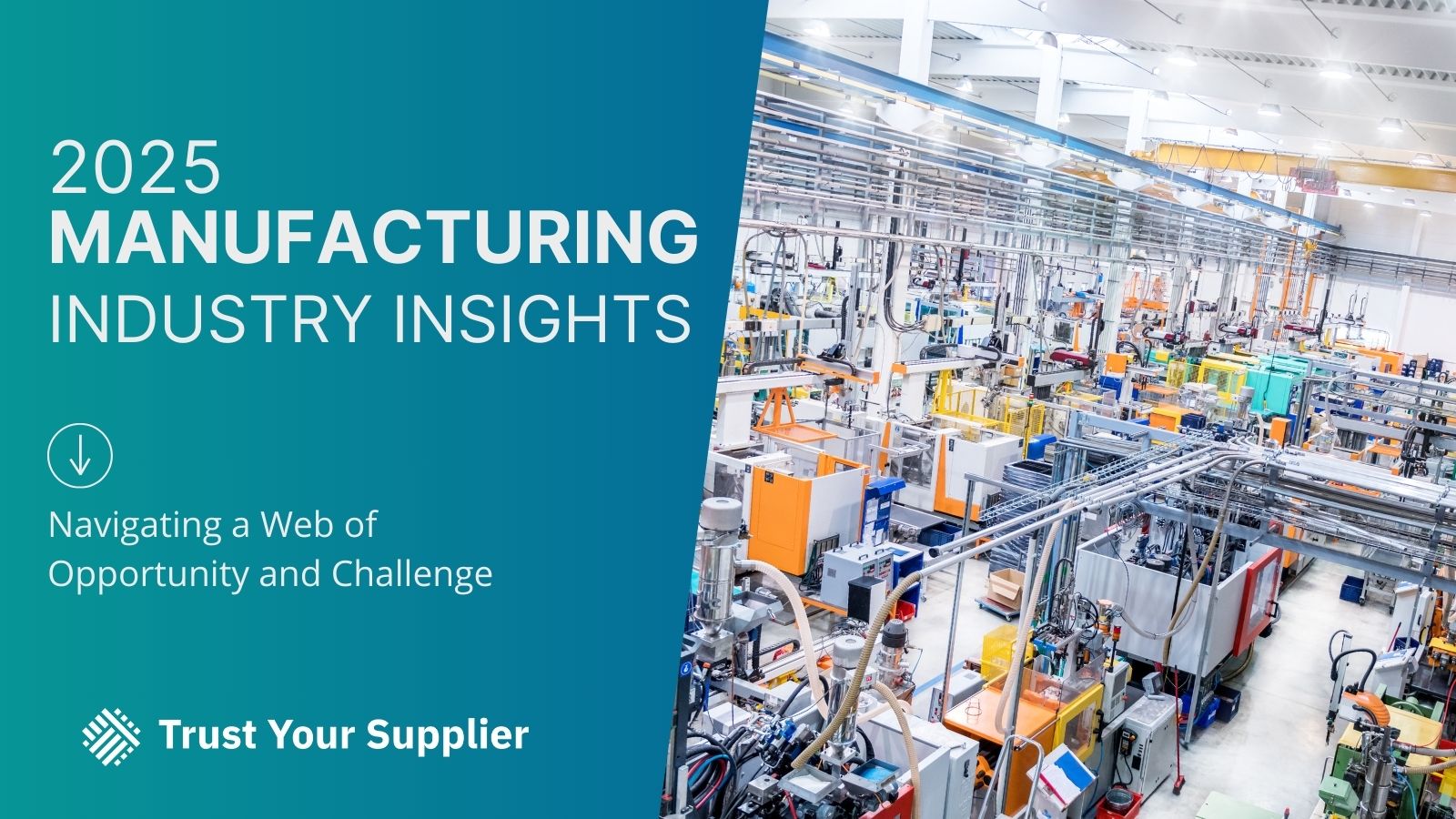by Sri Gopinath
As procurement continues to evolve in complexity and scope, several requirements could differ between direct and indirect suppliers. While Procurement teams are tasked with managing both direct and indirect suppliers, each category plays a unique role in delivering value. This requires supplier management strategies and selection criteria that could be different, managed by stakeholders who may also be different. Trust Your Supplier (TYS) offers a comprehensive platform designed to streamline supplier management across the entire supply chain.
Understanding Direct and Indirect Suppliers
Direct Suppliers
They are providers of goods or services directly incorporated into a company’s end-product. A direct material supplier provides raw materials, components or subassemblies that are directly used in the manufacturing process of a company’s products. For example, a steel supplier for an automobile manufacturer or a cloud services provider supporting a software firm’s hosted solutions. Relationships with direct suppliers are collaborative, and tend to be long-term, focusing on consistent quality and reliability with recurring demand patterns over the product life cycle.
Indirect Suppliers
These suppliers support the company’s needs for production and overall internal operations without being integrated into the final product. They encompass a broad range of goods and services, from production line spare parts and office supplies to software subscriptions, research & development, facilities management. The need for these products and services can vary greatly from month to month.
Managing Direct Suppliers
Effective management of direct suppliers is crucial, given their impact on product total cost of ownership, quality, and delivery timelines. Key strategies include:
- Risk Management: Ensuring suppliers maintain necessary certifications and comply with industry standards to meet regulatory requirements
- Operational Compliance: Verifying that suppliers adhere to company policies, including insurance coverage and ethical practices
- Proactive Mitigation: Understanding and staying ahead of potential company exposure due to supplier factors is critical to preventing potential negative impact from social, sanctions, and reputational perspectives
- Collaborative Planning: Engaging in joint forecasting and innovation initiatives to enhance product development and address potential issues proactively
- Supplier Key Information: Gathering key information from suppliers to facilitate operations and transactions – e.g., business license, tax forms, bank account for transactions, etc.
Trust Your Supplier (TYS), facilitates these needs through the creation of a secure digital wallet for each supplier with key information that is independently verified, along with:
- A centralized repository for certifications and essential documents
- Digitally enabled customizable workflows and questionnaires for onboarding
- Continuous monitoring of relevant company information
- Reports and visual dashboards for ongoing performance management
Tools for Managing Indirect Suppliers with TYS
While TYS provides similar firmographic information for suppliers, managing indirect suppliers may need to be set up differently due to unique needs, separate approval structure, etc. TYS supports this through:
- Bank Validation: Independent verification of banking information of information provided by suppliers to reduce the risk of fraud and create a traceable and verified process for managing account changes
- Rapid Onboarding and Offboarding: While questionnaire capabilities are similar to direct suppliers, indirect supplier questionnaires and workflows may need to be set up differently to accomplish the onboarding and continuous monitoring process while ensuring compliance needs
- Supplier Discovery: The supplier secure digital wallet created through registration on the TYS platform provides access to a network of vetted and trusted suppliers, enabling quick identification, outreach, and engagement of new suppliers as needs arise
- Compliance Assurance: Implementing standard workflows that guide internal teams through the necessary steps and decision recommendations to onboard suppliers with full confidence
The evolving procurement environment demands efficient and effective management of both direct and indirect supplier relationships. By recognizing the distinct characteristics of each and employing tailored strategies, businesses can optimize their supply chains, mitigate risks, and enhance overall performance. Trust Your Supplier stands ready to support organizations in achieving these objectives through its robust supplier management platform.




